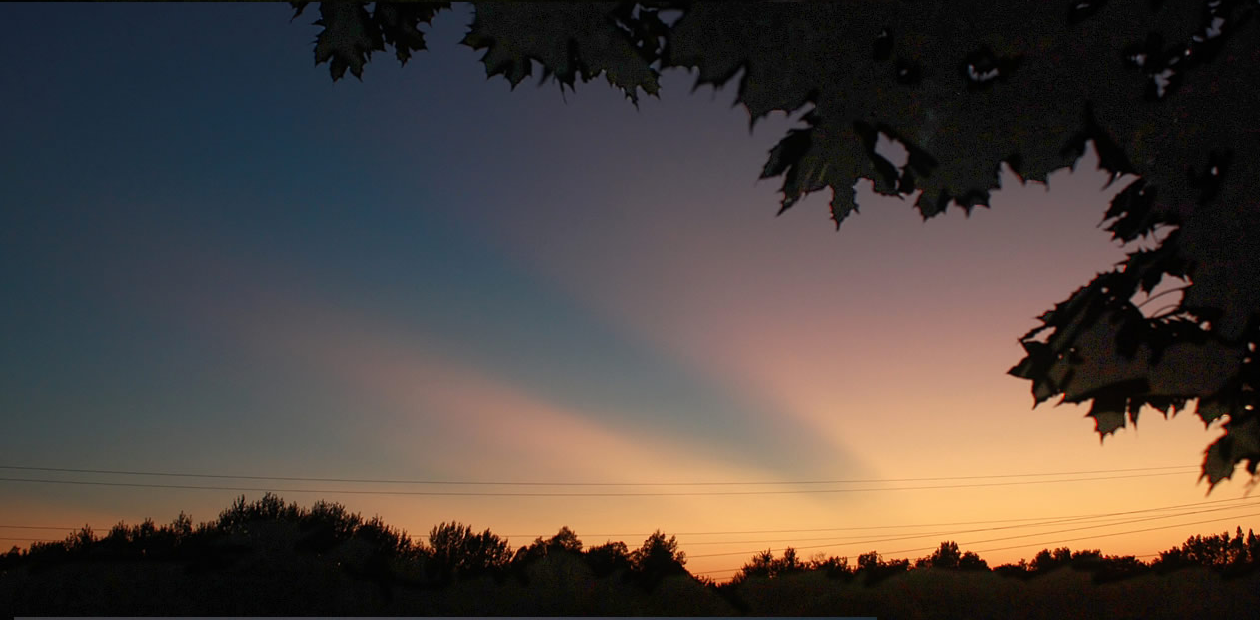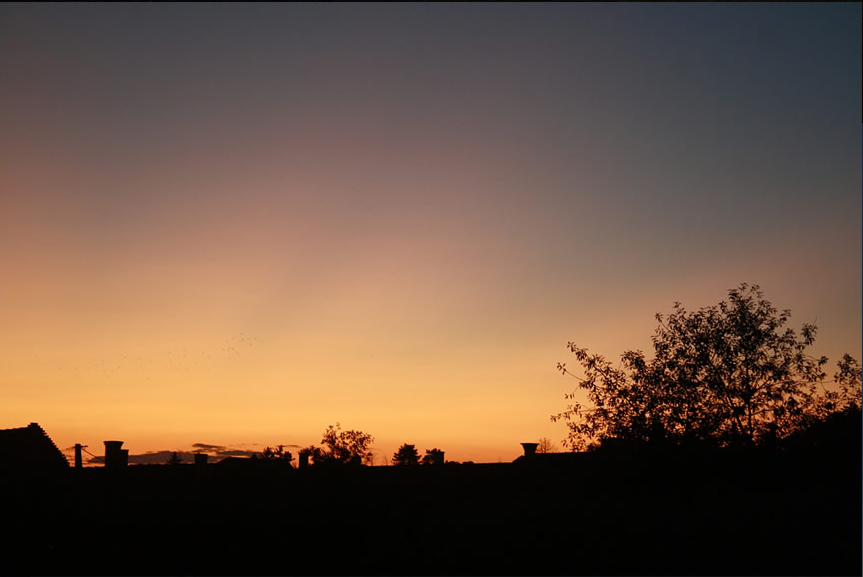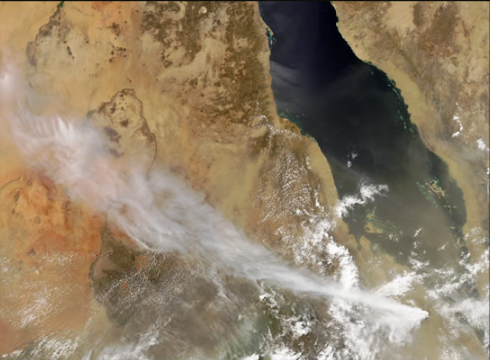OPOD - Volcano Skies
OPOD - Volcano Skies: Exploring the Phenomenon of Volcanic Twilights
Volcanic twilights have once again graced the skies of the Northern Hemisphere, treating observers to stunning displays of colorful sunsets and twilight rays. On August 17th and 18th, 2011, Rafael Schmall captured these unusual atmospheric phenomena at Somogy, Kaposfő, Hungary. The vibrant hues of intense yellow-orange twilight arches and diffuse pink crepuscular rays are a result of sunlight scattering by aerosols and dust in the lower stratosphere.
The primary cause behind these mesmerizing skies can be attributed to the eruption of the long-dormant African Nabro Volcano, located on the border of Eritrea and Ethiopia. On June 15th, a substantial eruption occurred, ejecting ash, steam, and copious amounts of sulfur dioxide into the atmosphere. This volcanic plume rose to an impressive height of 15 kilometers, dispersing sulfate aerosols throughout the stratosphere of the Northern Hemisphere.
To gain a better understanding of this phenomenon, let's delve into the science behind volcanic twilights. When volcanic eruptions occur, they release vast quantities of gases and particles into the atmosphere. These aerosols and dust particles have a profound impact on sunlight as it passes through the atmosphere. They scatter and absorb specific wavelengths of light, leading to alterations in the colors observed during sunrise, sunset, and twilight.
Here are some key points to consider about volcanic twilights:
-
Aerosol Scattering: The presence of aerosols in the lower stratosphere scatters shorter-wavelength light, such as blue and green, more effectively than longer-wavelength light like red and orange. This selective scattering causes the intense yellow-orange hues observed in volcanic twilights.
-
Crepuscular Rays: Volcanic aerosols also contribute to the formation of crepuscular rays, which are the sunbeams that appear to radiate from the position of the sun during twilight. These rays become more visible when illuminated by scattered light from the volcanic aerosols.
-
Sulfate Aerosols: The sulfate aerosols released during volcanic eruptions have a cooling effect on the Earth's surface. They reflect a portion of the incoming sunlight back into space, reducing the amount of solar radiation reaching the ground.
-
Global Impact: The dispersal of volcanic aerosols throughout the stratosphere leads to their global distribution. This means that volcanic eruptions can have far-reaching effects on atmospheric optics, influencing sunsets and twilights worldwide.
To provide visual context, NASA has captured images of Nabro Volcano's early plume and a pre-eruption view of the caldera. These images offer a glimpse into the immense power and scale of volcanic activity, highlighting the beauty and complexity of atmospheric phenomena.
In conclusion, volcanic twilights are captivating displays of nature's power and artistry. They are a result of sunlight interacting with aerosols and dust particles released during volcanic eruptions. The eruption of the African Nabro Volcano in 2011 led to the dispersion of sulfate aerosols throughout the Northern Hemisphere stratosphere, creating vivid yellow-orange twilight arches and pink crepuscular rays. These stunning atmospheric optics remind us of the interconnectedness of Earth's systems and the profound influence that natural events can have on our skies. So, keep an eye on the horizon during volcanic activity - you never know when you might witness the magic of a volcanic twilight.

Volcanic Twilights ex Africa
The Northern Hemisphere is once again experiencing colourful sunsets and twilights.
Rafael Schmall caught these unusual sunsets and twilight rays on 17th and 18th August '11 at Somogy, Kaposfő, Hungary.
The intense yellow orange twilight arch and diffuse pink crepuscular rays are characteristic of sunlight scattering by aerosol and dust in the lower stratosphere.
The culprit is likely the eruption of the long dormant African Nabro Volcano on the Eritrean and Ethiopean border. Ash, steam and copious sulfur dioxide were ejected on June 15th to form a long plume reaching 15 km high. The sufate aerosol is probably now dispersed around the Northern Hemisphere stratosphere to form these sunsets.
The two lowest images are NASA photographs of the early plume and a pre-eruption view of the caldera.
Images ©Rafael Schmall, shown with permission.




NASA images Nabro's early plume. At right is the Red Sea. The large image is a pre-eruption view of the caldera ~5 miles in diameter.

Note: this article has been automatically converted from the old site and may not appear as intended. You can find the original article here.
Reference Atmospheric Optics
If you use any of the definitions, information, or data presented on Atmospheric Optics, please copy the link or reference below to properly credit us as the reference source. Thank you!
-
<a href="https://atoptics.co.uk/blog/opod-volcano-skies/">OPOD - Volcano Skies</a>
-
"OPOD - Volcano Skies". Atmospheric Optics. Accessed on November 21, 2024. https://atoptics.co.uk/blog/opod-volcano-skies/.
-
"OPOD - Volcano Skies". Atmospheric Optics, https://atoptics.co.uk/blog/opod-volcano-skies/. Accessed 21 November, 2024
-
OPOD - Volcano Skies. Atmospheric Optics. Retrieved from https://atoptics.co.uk/blog/opod-volcano-skies/.